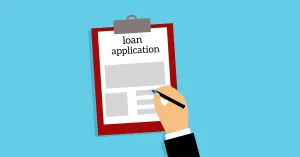If there is one thing we learn from life, it's that experience trumps all. So today on the Rules of Thumb blog from MoneyThumb, we would like to share the real-life experience of someone who has used a hard money lender. This is a great way to let our blog readers see how the process of hard money lending actually works.
Our story of a hard money lending experience comes from Ryan Deasy, a Texas real estate investor and writer at Bigger Pockets. Since most hard money loans are taken out by real estate investors like Mr. Deasy--although there are other instances where people choose a hard money loan, such as starting a small business, for example--Ryan's story will walk you through his actual experience with a hard money lender.
Ryan Deasy has an article at Bigger Pockets titled I Used a Hard Money Loan to Invest, Here's What Happened. Below are key highlights from that article, (keep in mind that he is discussing hard money loans for real estate investing.) :
"For me, hard money was there when I had a deal I knew was great, but I didn't have the cash to purchase it or fund the repairs."
Example: Hard Money Loan by the Numbers
Let me give you a real-life example.
- Purchase: $123,000
- Down payment: $18,450
- Rehab budget: $55,000
- Total loan amount: $159,550 ($123,000 – $18,450 + $55,000)
- After repair value: $255,000 (per appraisal)
- 75% of ARV: $191,250
Don't forget, with this hard money loan, they were paying for 100 percent of the rehab, too.
Let me be clear though. They (at least for me) did not write me a check for the $55,000 that I indicated was the rehab budget for the property. Not even close to that.
Instead, everything was done on draws. Did I know that going into it? Not really. Do I really wish I understood that better? Yes.
Let me explain why.
The rehab aspect of the loan could potentially have a major impact on your wallet. Yes, they will pay for repairs, but there is a process.
Key Takeaways From the Hard Money Loan Process
For me, I needed to front the money (or at least part of it) for each job on the rehab outline. That means, aside from any down payment money, lender fees, and points, I still needed to have some reserves to get the job done.
This is massive. This is monumental. I think it is of the utmost importance that this is explained and understood well before you take the proverbial plunge. The last thing you want is to make the purchase and then run out of money in the rehab phase.
Please use caution. This particular fact has been discussed at length, but it is still worth mentioning: Do not give your contractor all of the money in advance.
Many argue that no money should be exchanged before the job is completed and the draw is issued. This is for you to decide based on your relationship with the contractor, the level of trust you have, and, I suppose, how much cash you are willing to risk.
This is not an article about “no money down.” This article addresses the fact that you are not alone when it comes to issues surrounding cash reserves, saving up, and down payments.
Yes, there are ways to do no money down and even low money down (think seller financing). However, my experience with a hard money lender was a great one.
This strategy checked all the boxes for this particular deal. I needed to get into the property with a lower down payment, and I needed someone to fund the rehab. Yes, there were points, and yes, the interest rate was comparatively high (9.9 percent). But at the end of the day, I got the property, rehabbed it, and rented it. Mission accomplished.
That concludes our Rules of Thumb blog post showing a real-life experience with hard money lending. Many hard money lenders are MoneyThumb customers, using our PDF financial file converters to convert the financial statements of prospective borrowers for quicker and more informed lending decisions. Ask your hard money lender if they use MoneyThumb tools.





















Add comment